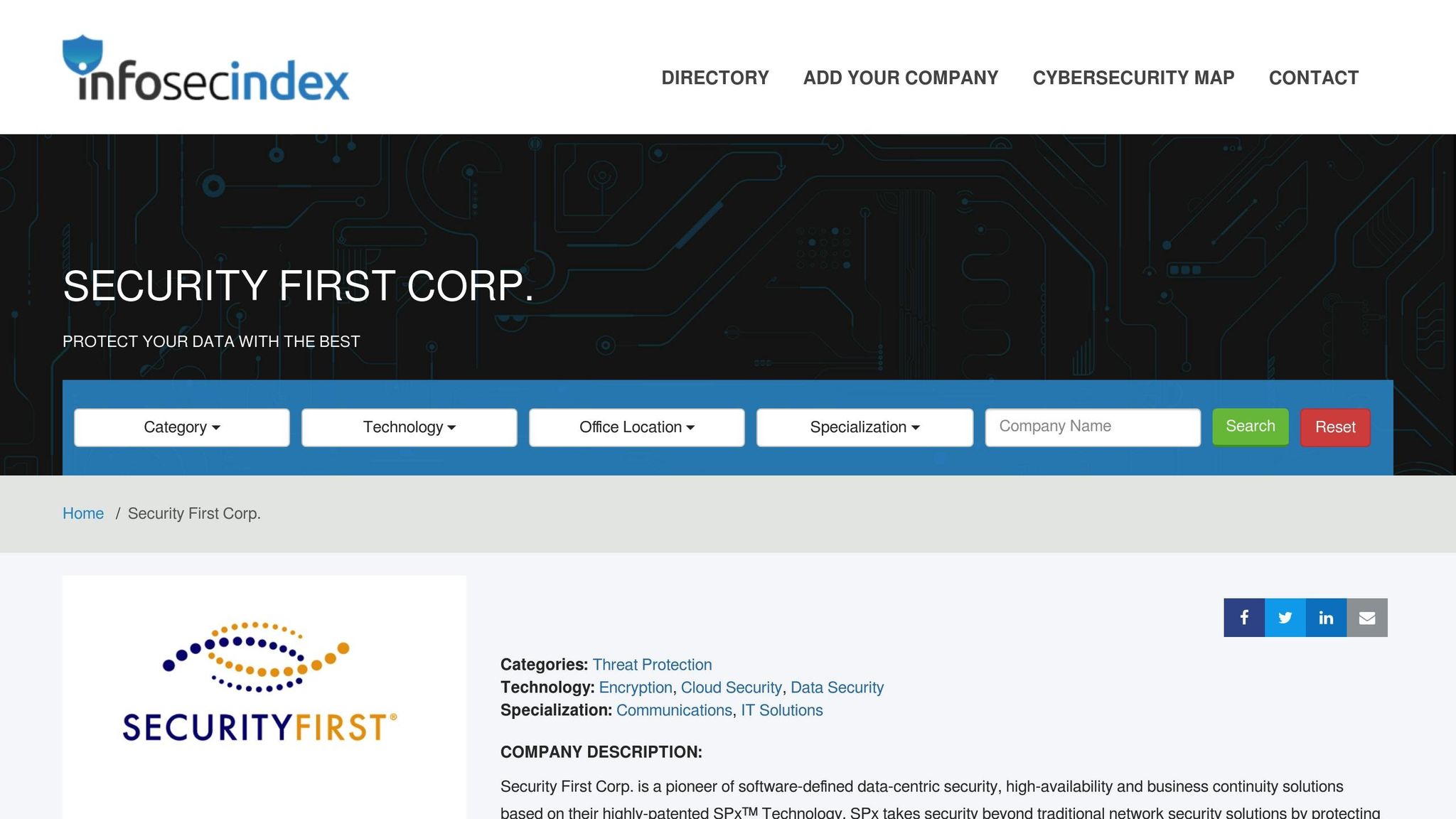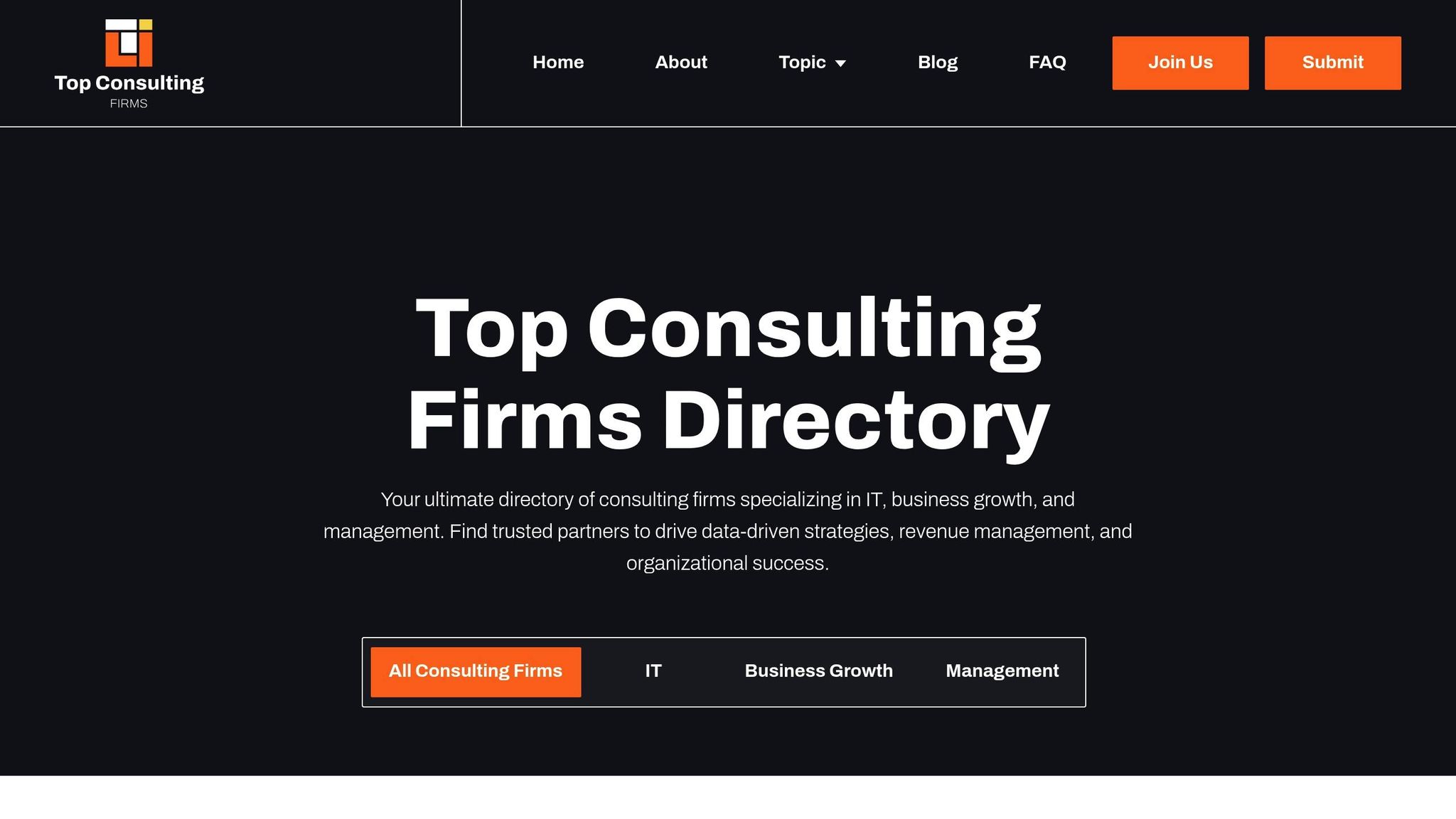When a disruption occurs, the way your contingency plan performs can make or break your recovery. But here's the truth: the real value lies in evaluating what worked, what didn’t, and why. A structured post-event review helps you identify gaps, refine your strategies, and prepare for future challenges.
Key Takeaways:
- Post-contingency evaluation analyzes how well your emergency plans performed during a crisis.
- It bridges the gap between expectations and actual outcomes, uncovering critical lessons.
- The process involves After Action Reports (AARs), incident analysis, and plan updates.
- Metrics, peer reviews, and gap analysis ensure evaluations lead to real improvements.
- Training, testing, and clear action plans keep your organization ready for the next event.
What Strategies Can Be Used To Test Contingency Plans? - SecurityFirstCorp.com

Core Evaluation Steps
After a crisis, taking the time to reflect and assess can turn hard-earned lessons into practical strategies for the future. This process ensures that insights gained during the event are not lost as day-to-day operations resume.
Conducting an After Action Report (AAR)
The After Action Report (AAR) is a key tool for evaluating how well your organization responded to a crisis. It provides a structured way to turn experiences into actionable improvements.
Start with preparation. Before gathering your team, define the purpose of the review. Are you aiming to prevent similar incidents, identify delays in response, or evaluate decision-making processes? Clearly outline these goals and ensure all key participants are invited. If your internal team led the response, you might want to bring in an external facilitator to ensure objectivity.
Plan the logistics carefully. Set aside enough time for thorough discussion, and establish ground rules to encourage open and respectful communication. A no-blame environment is essential for honest feedback.
Kick off the review by recapping what was expected during the incident. This includes predicted scenarios, available resources, leadership roles, and planned response measures. Then, compare this to what actually happened. Document key details like response actions, timelines, locations, and the tools or systems used. Use both response metrics and participant feedback to build a complete picture. Tools like FEMA's Preparedness Toolkit can be helpful during this phase.
Next, analyze the results. Look at what went well and where things fell short. For example, were there technology failures or unexpected challenges that slowed the response? Dig into the root causes to uncover areas for improvement.
"If you experience your own incident, even if it didn't turn out to be a major catastrophe, my advice to you is always do an after‑action review and develop an after‑action report where you can cite your strengths, your vulnerabilities, your gaps, your opportunities for improvement, and then make changes to your plans based on what people have learned." - Stan Szpytek, President and CEO, Fire & Life Safety, Inc.
Turn these insights into concrete steps. Focus on areas that didn’t meet expectations, whether due to communication issues, flawed strategies, or policy challenges. Make sure your recommendations are specific, measurable, and tied to clear goals. Assign action items with deadlines and track progress over time. Once the AAR is finalized, share it with stakeholders and embed this review process into your organization's culture as a routine practice.
From here, move into a deeper analysis of the incident for a more detailed performance review.
Analyzing Incidents and Recovery Performance
While an AAR provides a broad overview, a deeper dive into the incident can uncover critical details about your response. Recovery performance metrics - such as how quickly the contingency plan was activated, key personnel were notified, and operations were restored - offer valuable benchmarks.
Review how resources were used by comparing planned versus actual staffing, equipment, expenditures, and vendor involvement. Any discrepancies can highlight gaps in your planning. Examine communication flows, both internally and externally, to pinpoint delays or bottlenecks that may have hindered the response. Finally, assess the decision-making process to evaluate how timely and effective critical decisions were. This analysis can help refine command structures and improve response protocols moving forward.
These insights directly inform updates to your contingency plan, ensuring it evolves based on real-world performance.
Updating the Contingency Plan
The final step is integrating what you’ve learned into your contingency plan. This isn’t just about fixing what went wrong - it’s about improving your overall preparedness.
Start by revising communication protocols and resource allocations based on the gaps identified. Address skill gaps through updated training programs, which could include new training modules, hands-on practice, or cross-training to reduce reliance on specific individuals.
Resource planning should also be adjusted based on actual usage during the incident. This might mean reassessing emergency supply inventories, vendor contacts, or backup facility requirements. If response costs exceeded your budget, financial plans may need to be revised. Additionally, update operational documents to reflect new lessons learned or effective improvisations that emerged during the crisis.
Before rolling out the updated plan, test it. Conduct drills and exercises to ensure the changes are practical and effective. Regular reviews will keep your plan aligned with changes in your organization, technology, and the risks you face.
"Resilience comes with experience, awareness, and adaptation." - AlertMedia
Evaluation Methods and Tools
Turning detailed incident analyses into actionable improvements requires objective evaluation methods. These methods ensure that lessons learned are not just theoretical but lead to meaningful changes. By using defined tools and strategies, contingency evaluations become data-driven and practical.
Using Gap Analysis for Plan Assessment
Gap analysis is a straightforward way to measure how your plan's intended outcomes compare with actual results. It helps identify where the plan fell short and what needs to be adjusted.
Frameworks like NIST SP 800-34 can provide benchmarks for key metrics such as recovery time objectives (RTOs) and recovery point objectives (RPOs). These benchmarks serve as the backbone of your gap analysis.
What should you compare? Start with these:
- Planned vs. actual response times: For instance, if your plan aimed for system restoration within four hours but it took twelve, that's an eight-hour gap that needs addressing.
- Resource allocation assumptions vs. reality: Did the resources you planned for meet the actual demands?
- Communication efficiency: Were messages sent and received as planned, or were there delays?
Organize findings in a structured matrix. For example, if your backup data center was supposed to be operational in two hours but took six due to network issues, note this as a four-hour gap with a high business impact.
Root causes matter. A communication gap, for instance, might arise from outdated contact lists, insufficient backup channels, or unclear escalation procedures. Pinpointing these issues ensures that solutions are targeted and effective.
These insights serve as a foundation for peer reviews and measurable improvements.
Validating Results with Peer Reviews and Metrics
Peer reviews bring fresh perspectives to your evaluations. Internal teams may miss critical flaws due to their involvement in the incident. By involving colleagues from other departments who weren’t part of the response, you can gain more objective feedback. Provide them with access to the incident timeline, response actions, and your initial assessments.
Quantifiable metrics are key for tracking progress. Avoid relying on subjective impressions. Instead, focus on measurable outcomes like:
- System downtime duration
- Financial impact per hour of disruption
- Percentage of staff who received timely notifications
- Customer complaint volume during the incident
Create a metrics dashboard to consistently track these numbers across incidents. This helps you identify trends and evaluate improvements. For example, if system restoration time drops from eight hours to four over several incidents, that’s clear proof of progress.
Benchmark your metrics against industry standards. If your performance lags behind, it could signal a need for outside expertise or additional resources.
Use both lagging indicators (e.g., total downtime) to understand past performance and leading indicators (e.g., staff training completion rates) to predict future effectiveness.
Documentation Best Practices
Thorough documentation ensures that lessons learned are preserved and can inform future planning. It turns evaluation insights into lasting organizational knowledge.
Assign someone to maintain a detailed incident log during the response, capturing critical information like timestamps, actions taken, decisions made, and resource usage. This person’s sole focus should be documentation to ensure accuracy and completeness.
Track both direct costs (e.g., vendor fees, overtime pay, equipment replacement) and indirect costs (e.g., lost productivity, customer compensation, regulatory fines, reputation management).
Resource reports validate your plan’s assumptions. Document key details like:
- Personnel involvement: Who participated, and how long did they work?
- Equipment usage: What tools and resources were deployed?
- Vendor performance: Were external vendors available and effective?
Standardized templates can help maintain consistency across incidents. Include sections for an incident overview, timeline, resource utilization, financial impact, lessons learned, and recommended actions.
Store all documentation in a centralized, searchable system that remains accessible even if your primary systems are down. Cloud-based platforms can work well, but ensure they are secure and include backup options.
Version control is critical as you update plans based on evaluation findings. Keep records of what changed, when, and why. This allows you to track how your contingency planning evolves and measure whether updates improve performance in future incidents.
sbb-itb-97f6a47
Continuous Improvement Practices
Contingency planning is not a one-and-done task - it evolves with every lesson learned from past incidents. This ongoing process of testing, updating, and training ensures your plans stay relevant and effective as business needs and risks shift. These continuous efforts strengthen the overall reliability of your contingency plan.
Regular Testing and Validation
Testing is the backbone of continuous improvement. It’s how you confirm that changes made to your contingency plan actually work. Different types of tests serve different purposes:
- Tabletop exercises: These bring key team members together to discuss and walk through potential scenarios without interrupting daily operations. They’re great for spotting gaps in communication or decision-making processes.
- Functional exercises: These focus on specific parts of your plan, like testing backup systems or communication protocols.
- Full-scale exercises: These simulate a complete incident to assess how well the entire plan works in a real-world scenario.
The frequency of testing depends on factors like your organization’s risk level, regulatory requirements, and business cycles. High-risk environments might need more frequent testing. It’s also smart to schedule these exercises during times when key personnel are available and avoid peak business periods.
To measure progress, track metrics for each test. For example, record how long it takes to send out initial notifications, activate backup systems, or follow established procedures. These numbers help you gauge how well your plan is performing and where improvements are needed.
Establishing a Plan of Action & Milestones (POA&M)
A Plan of Action and Milestones (POA&M) is a structured way to turn evaluation findings into actionable steps. It ensures weaknesses are addressed systematically, not just noted and forgotten.
Each POA&M item should clearly outline:
- What needs to be fixed
- Who is responsible for the fix
- A timeline for completion
- How success will be measured
For example, if backup generators are slow to activate, your POA&M might involve upgrading the system, assigning the task to a specific team, and setting a deadline with measurable goals.
Prioritize tasks using a simple system, like high, medium, and low priority, to focus resources on the most critical fixes. Regular status meetings help teams track progress, discuss roadblocks, and adjust priorities if needed. If deadlines are consistently missed, it might signal a need to reallocate resources or revisit priorities.
Tracking milestones provides visibility into what’s working and what’s not. For instance, if resource constraints repeatedly delay tasks, it could be a sign that your contingency planning efforts need more funding or staff support.
Training and Plan Updates
Training is the glue that holds your contingency plan together. Without it, even the best-laid plans can fall apart.
Role-specific training ensures every team member knows their responsibilities. For example:
- IT staff might need training on backup systems and recovery procedures.
- Communications teams should practice crafting crisis messages and handling stakeholder notifications.
Cross-training is also important to avoid single points of failure. If a key person is unavailable during an emergency, someone else should be ready to step in.
The frequency of training depends on your organization’s needs and staff turnover. Regular sessions help new employees get up to speed, while refreshers keep experienced staff sharp.
Your plan also needs to evolve alongside changes in technology, staffing, regulations, and business operations. Set up triggers for plan reviews, such as major system upgrades, organizational restructuring, or new regulatory requirements. For example, healthcare organizations may need to update plans to stay compliant with HIPAA, while financial firms must adjust for new industry regulations.
Frameworks like ISO 22301 for business continuity management can guide you in keeping plans up to date. To make this process seamless, integrate plan reviews into regular business activities, like quarterly meetings or annual strategy sessions. This ensures your emergency preparedness aligns with your broader business goals.
Using Consulting Expertise for Evaluation
When internal evaluations aren't enough, bringing in external consultants can provide the fresh perspective and specialized knowledge needed to assess the effectiveness of contingency plans. These professionals bring a wealth of experience from different industries, helping to uncover hidden vulnerabilities and apply proven approaches to strengthen your strategies.
When to Engage External Consultants
There are several scenarios where external consultants can be a game-changer. For example, complex regulatory environments often require expertise that’s difficult to maintain within your team. Industries like financial services, navigating Federal Reserve stress tests, or healthcare, dealing with HIPAA compliance, benefit greatly from consultants who work with these regulations daily.
Major organizational changes - such as mergers, acquisitions, or restructuring - can make existing contingency plans outdated. Consultants help reassess risk profiles to align with the new organizational landscape. Similarly, technology transformations, like cloud migrations or cybersecurity upgrades, introduce new vulnerabilities that might slip through the cracks of your current plans.
Post-incident reviews are another critical area where outside expertise can shine. Internal teams may be too close to the situation or hesitant to critique existing processes. Consultants provide an unbiased analysis to identify what went wrong and how to prevent future issues. Lastly, resource constraints can make it tough for internal teams to juggle daily operations and thorough evaluations, making external help an efficient solution.
Finding the right consulting partner is essential, and tools like the Top Consulting Firms Directory can simplify the process.
Top Consulting Firms Directory

Locating a consulting firm with the right expertise can feel overwhelming, especially when you need specialists in risk management and business continuity. The Top Consulting Firms Directory (https://allconsultingfirms.com) is a curated resource designed to connect businesses with leading firms in these critical areas.
This directory highlights firms with expertise in digital transformation, cybersecurity, IT infrastructure, and risk management - key components of modern contingency planning. Instead of sorting through countless firms with varying capabilities, this platform helps you zero in on those that understand the complexities of today’s business environment.
What sets this resource apart is its focus on firms that combine technical know-how with strategic insights. These consultants don’t just evaluate your current plans; they help you strengthen your organization’s resilience while aligning with broader business objectives.
Consulting Firm Capabilities
Once you’ve decided to bring in external expertise, it’s essential to look for consultants with specific skills that address your organization’s unique needs. Their insights not only help fill immediate gaps but also enhance your long-term contingency planning framework.
Key areas of expertise include:
- Cloud services: Consultants assess recovery time objectives for cloud systems, evaluate multi-cloud redundancy strategies, and recommend cost-effective cloud-native disaster recovery tools.
- Data analytics: Using incident history, they identify patterns, predict potential failure points, and calculate recovery times, giving you a clearer picture of potential business impacts.
- Cybersecurity: They tackle challenges like ransomware and data breaches, integrating cybersecurity strategies into your broader business continuity efforts.
- IT infrastructure: Experts evaluate whether your backup systems, network redundancies, and recovery procedures can meet performance demands during a crisis.
- Revenue protection: Consultants focus on minimizing the impact of incidents on your market position and customer relationships, ensuring your plans safeguard customer data, maintain service levels, and protect your brand reputation.
- Strategic management: They address the governance and communication structures needed to execute plans effectively, with a focus on organizational change and human factors.
The best consulting engagements often combine several of these areas. For instance, a thorough evaluation might involve cybersecurity experts collaborating with cloud infrastructure specialists and organizational change consultants to tackle every aspect of your contingency planning needs. By leveraging this multidisciplinary approach, you can ensure your organization is prepared for whatever challenges come its way.
Conclusion
Evaluating contingency plans is at the heart of building a resilient organization. The approach outlined here transforms crisis management into a chance for strategic growth, ensuring your organization not only recovers from incidents but also emerges better equipped for the future.
To recap, effective evaluation turns lessons learned into actionable improvements. This process thrives on a mix of structured analysis and ongoing refinement. Tools like After Action Reports provide a solid starting point, while gap analysis pinpoints areas that need attention. Thorough documentation preserves critical insights, and regular testing ensures plans perform as intended when it matters most.
Key Takeaways
Organizations that excel in contingency planning treat evaluation as an ongoing process. Frequent testing keeps plans relevant and teams ready to respond. Bringing in external consultants can offer fresh perspectives and help address blind spots that internal teams might miss.
Integrating technology is another critical component. Ensuring that cloud systems, cybersecurity measures, and data analytics function smoothly during a crisis can prevent small issues from escalating into major problems. A holistic review of these systems helps identify vulnerabilities before they become costly.
Of course, technology alone isn’t enough. The human factor is equally important. Training programs, clear communication strategies, and strong leadership structures play a decisive role in turning plans into effective action. Regular evaluations make sure these elements keep pace with your organization’s evolving needs.
Financial considerations also play a big role. Understanding the full cost of downtime - whether it’s lost revenue, regulatory fines, or damage to your reputation - helps justify the resources needed to improve contingency plans.
With every evaluation cycle, your organization’s strategy becomes sharper. Each incident or test adds to your institutional knowledge, turning challenges into opportunities for growth. Organizations that embrace this mindset don’t just survive crises - they thrive, building confidence among stakeholders and gaining a competitive edge.
Ultimately, how you apply this framework will depend on your organization’s specific risks, culture, and goals. Whether you’re conducting your first review or refining a well-established process, consistency and a commitment to improvement will ensure long-term success.
FAQs
What are the essential elements of an effective After Action Report (AAR) for evaluating a contingency plan?
An After Action Report (AAR) is most effective when it includes a concise summary of the event or exercise, a breakdown of the actions taken, and a detailed review of what succeeded and what could be improved. To make it truly impactful, it should offer specific, actionable recommendations to address shortcomings and better prepare for future scenarios.
The report should also gather input from stakeholders, assess the effectiveness of response processes, and highlight corrective steps to reinforce overall contingency plans. By focusing on these components, the AAR becomes a valuable tool for driving continuous improvement.
How can organizations turn insights from post-contingency evaluations into meaningful improvements for their plans?
To turn post-contingency evaluations into real progress, organizations need a structured approach to analyze findings and identify precise weaknesses or gaps. The key is to prioritize these insights by creating clear, actionable steps and assigning responsibility to ensure they’re carried out.
Using tools like root cause analysis and scheduling regular follow-up reviews can help transform lessons learned into meaningful updates. Beyond that, encouraging a mindset of ongoing improvement and offering consistent training ensures these insights become a natural part of future contingency plans, making them stronger and more prepared for challenges ahead.
When should an organization hire external consultants to evaluate contingency plans, and what qualities should they look for in a consulting partner?
Hiring external consultants can be a practical move when organizations require objective insights, specialized knowledge, or quicker outcomes during contingency plan assessments. This approach proves especially useful in complex or high-pressure situations where internal teams might lack the necessary expertise or impartiality.
When choosing a consulting partner, prioritize those with demonstrated experience in contingency planning, a history of successful projects with similar organizations, and reliable references. Ensure they use clear evaluation methods and are capable of delivering actionable recommendations specifically designed to address your organization's unique challenges.


